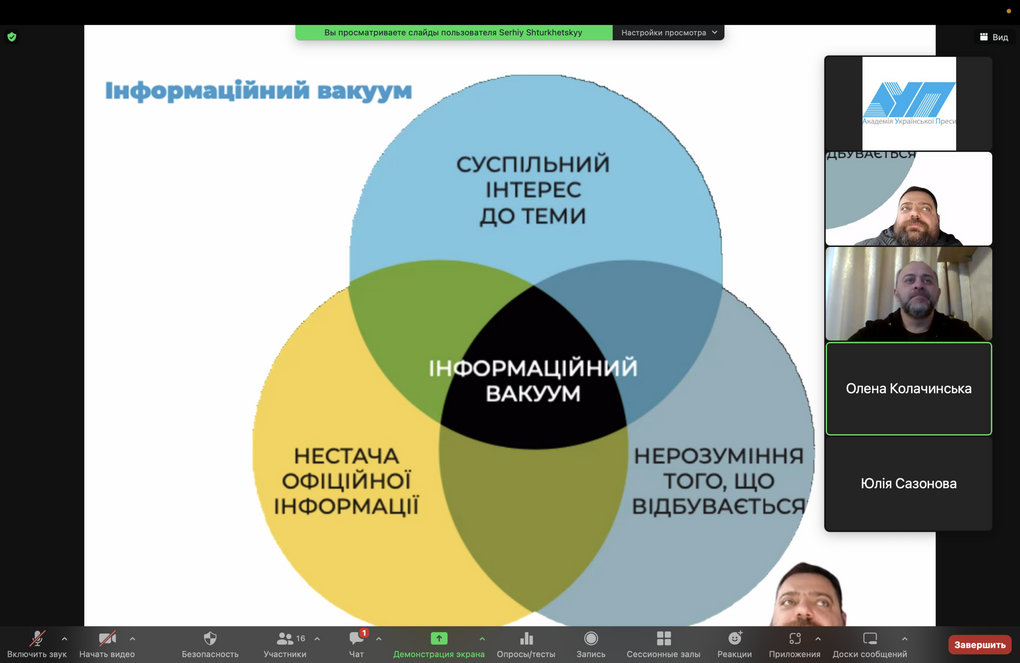
On 12-13 April, the Academy of Ukrainian Press (AUP) held a two-day online training "House of Fakes: Lies on Schedule (Chronology of Russian Information Throwdowns)".
The trainers shared the rule of creating an information vacuum. It arises at the intersection of the following phenomena: public interest in a topic, lack of understanding of what is happening, and lack of official information. Together with the participants, they analyzed the types of Russian IPSOs, their audience, which channels were used to disseminate them effectively, what threats they conceal, and how to analyze information sources.
Oleksandr Horokhovsky, head of the fact-checking project BezBrekhni, said: "The IPSO is a structure that can contain fakes, propaganda elements, elements of spreading fear and panic, and elements of truthful information. That is why it is called special, because it is mixed. To disseminate IPSO, the authors always carefully consider the channels of promotion."
Serhiy Shturhetskyi, Head of the Independent Media Trade Union of Ukraine, said: "Public interest in the topic, lack of understanding of what is happening and the lack of official information on 24 February, the day the full-scale invasion began, turned into a huge information vacuum for Ukrainian society."
The online training was held as part of a joint project between AUP and Internews, an international organization that implements the Media Program in Ukraine, funded by the United States Agency for International Development (USAID). This program strengthens Ukrainian media and increases access to quality information.